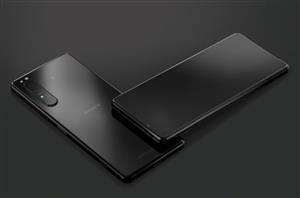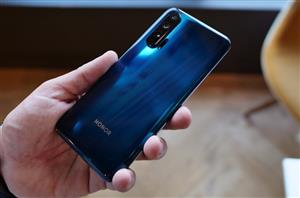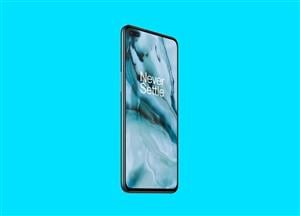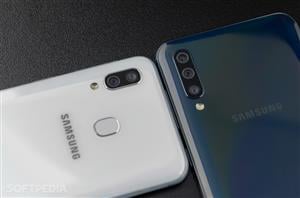20 Hidden iOS Functions to Improve the iPhone and iPad
Check out our top tips for improving your iPhone or iPad by accessing hidden iOS functions to improve your apple experience.

- Using Notes App as a Document Scanner
- Hidden Functions in the Control Center
- Fast Access to Bluetooth & WLAN
- Changing the Brightness of the iPhone Flashlight
- Personalise the Control Center
- Adding Notes to Lock Screen
- Activate Do Not Disturb for a limited time
- Using Airpods as a Hearing Aid
- Stopping Notifications
- Turn off Grouping Messages
- Muting Messages & Notifications
- Using Drag and Drop
- Search for Photos by Date
- Combining Search Terms in Photo Apps
- Filter Videos, Selfies, Panoramas and Portraits
- Sharing Original Photos and Videos
- Tap iPhone with one hand
- Make your iPhone Measure Things
- Flight information in Safari and Search
- Adjusting Screen Brightness
Apple has added important functions to iOS over the years. However, many of the latest additions are no longer self-evident: In order not to unnecessarily complicate the system, some of them remain very hidden.
They make many things easier or faster that are otherwise difficult to do on the iPhone and iPad. Our tips show where you can find the functions and how you can get more out of your Apple devices.
Using Notes App as a Document Scanner
Not everyone knows that Apple's notes app turns the iPhone and iPad into a great document scanner: you have to create a new note or open an existing one and tap the camera button above the keyboard, then the menu for "Scan documents" appears.
It's faster on iPhones and iPads with iOS 13 or later Hold down the Notes icon on the home screen until a menu opens and then select "Scan document" at the bottom to jump directly to the camera view.
If the iPhone detects a paper document, it is recorded immediately, you don't even have to press the shutter release. iOS even corrects the perspective automatically.
As of iOS 13, you can scan documents in the files app instead of in notes and save them locally on the device or in a cloud service of your choice. The function is hidden behind the button with the three dots.
Hidden Functions in the Control Center
You can open the control center on newer iPhones (from the iPhone X) and iPads by swiping from the top right edge of the screen towards the center of the screen. On older iPhone models with a home button, the control center can be swiped in from the bottom of the screen with your finger.
You can use the control elements of the control center in the overview, for example, to adjust the screen brightness or to activate the orientation lock. However, behind many buttons there is also a detailed view that you can access by holding the button down for a longer period of time.
Fast Access to Bluetooth & WLAN
Behind the button collection with flight mode, WLAN and Bluetooth, for example, an extended view appears that enables the mobile data connection and the personal hotspot to be switched off.
From iOS 13 you can also press and hold the WLAN and Bluetooth icon to establish a direct connection to a specific WLAN or Bluetooth accessory.
iOS remembers when you reactivate WiFi while Airplane Mode is active and selects this setting again the next time you activate Airplane Mode. The same applies to Bluetooth connections: You can continue to listen to music with the AirPods if you have already activated them in airplane mode.
Changing the Brightness of the iPhone Flashlight
You regulate the brightness with longer pressure. There are four levels to choose from, which you can select with your finger. iOS remembers the setting last used. The flashlight continues to glow with the selected brightness level each time it is activated - until you change this again manually.
In the detailed view of the screen brightness there are additional buttons for night shift mode, true tone (if available) and dark mode (from iOS 13).
Personalise the Control Center
Open the settings for "Control Center" and then tap on "Customize Controls", you can configure your individual control center with the most important functions, such as flashlight, camera, a remote control for Apple TV and HomeKit TV, or screen recording.
A button for quickly activating the energy-saving mode and various operating aids that are useful for users without restrictions can also be placed in the control center, including the practical magnifying glass function, "guided access" and adjustment of the text size.
Tap the green plus button to add the desired element - or the red minus button to remove existing ones. You determine the order of the buttons in the control center by dragging the icon with the three lines on the right.
Adding Notes to Lock Screen
If you add the notes app in the control center under "Customize controls", you can create a new entry at any time directly from the lockscreen - so you don't have to unlock your iPhone or iPad first.
iPad owners with Apple Pencil have it even easier. All you need to do here is press the pen tip on the display to open a new note. For this to work, however, the display must be active. Sometimes the iPad also takes a moment to reconnect to the Pencil.
In the settings for notes you will find configuration options for these quick notes. At the very bottom there is the new entry "Access in the lock screen": Here you can either switch off the function or choose "Always create new notes". Or you always want to "continue the last note" on the lock screen.
You can now create a note directly from the lock screen without unlocking the iPhone or iPad.
Activate Do Not Disturb for a limited time
You can activate the mode for a certain period of time - one hour or until the evening of the same day (7 p.m.), after which iOS switches it off automatically and you can be reached again without lifting a finger.
To call up the quick options, press and hold the crescent moon icon for "Do not disturb" in the control center.
If there is an appointment in the calendar, "Do not disturb" offers to switch itself off after the entered event has ended. The location-based variant "Until I leave this place" is also particularly useful. Only when you change your location again will the iPhone or iPad signal calls and messages again.
Using Airpods as a Hearing Aid
For a long time, the "live monitoring" function was only available for iPhone-compatible hearing aids, but now AirPods owners can also use it. This turns the iPhone into a remote microphone that transmits the recorded sounds to the earplugs.
To do this, activate the button for "Listen" in the iOS settings under "Control Center" in the "Customize Controls" section by pressing the green plus button. You can then switch on live monitoring via the control center at any time, provided the AirPods are already in your ears and connected to the iPhone.
Stopping Notifications
Turn on "Dim lock screen" to automatically reduce the lockscreen brightness and stop displaying notifications until "Do Not Disturb" is turned off.
You can switch on the darkened lock screen with a fixed schedule in the settings for "Do not disturb" or in the clock app under bedtime. At bedtime, iPhone reminds you to go to bed early and wakes you up the next morning at the set time. If you confirm the iPhone's go-to-bed reminder, "Do not disturb" is automatically activated. As soon as you switch off the alarm clock in the morning, you can be reached again.
To show the notifications at night, swipe up on the lock screen. Alternatively, you can unlock the iPhone and swipe in Notification Center from the top.
Turn off Grouping Messages
Since iOS 12, notifications from an app have been automatically stacked. So you only see the most recent message, previous ones remain hidden underneath. This creates a better overview, but requires an additional tap to show all the notifications of an app.
If you would like to see the notifications of an app individually on the lock screen as usual, open the entry for "Notifications" in the settings and search for the desired app. Tap your name to open the related notification settings.
It is faster if you swipe a notification for the respective app in the notification center to the left and then tap on "Manage". You can find the settings button below.
In the "Options" section you will see the new entry "Message Grouping" at the bottom. Open this and select "Off" if you want to receive the notifications of the app individually as before. Alternatively, there is the option "By App", then iOS always stacks all new messages from an app. The "Automatic" selected by default is supposed to work more intelligently and, for example, only stack related iMessage conversations.
Muting Messages & Notifications
On the iPhone or iPad, slide an unwanted notification from right to left on the lock screen or the notification center to reveal the option "Manage" next to "Show" and "Remove".
Tap this if iOS should "deactivate" the messages of the associated app in the future.
If, however, you select "deliver discreetly", they will arrive without sound / vibration and only appear in the message center. iOS doesn’t show it as a banner on the lock screen or when the iPhone is active. The app icon does not have a red button either.
Using Drag and Drop
iPhone users are not completely deprived of drag & drop, but the function is very limited: unlike on the iPad, you cannot drag objects from one app to another. on the iPhone you have the option of rearranging files in the Files app or rearranging photos in albums. It is also possible to move text in notes, as well as sorting notes into folders.
If you hold down an app icon on the home screen until it starts to wobble, you can start dragging and at the same time add other app icons by tapping with another finger or hand. Then move the whole stack to where you want it.
To activate "Wobble mode", select from iOS 13 "Rearrange apps" from the quick action menu, which is opened by holding down the app icons - alternatively, you can hold down the icon with your fingertip and start dragging immediately. Provided that the timing is correct, the home screen edit mode will also start.
Search for Photos by Date
You can type in a month or year into the search field of the Photos app to narrow down the list of hits. iOS version 12 and higher also accepts seasons like "spring" or a certain date with or without a year.
If you enter two calendar dates in a row, the Photos app delivers all hits in between. Relative information is also possible: for example, type in "two years ago" or "two months ago".
Combining Search Terms in Photo Apps
You can combine search terms to find photos faster. In iOS 12 you first have to enter "Summer" and then tap the hit "Summer" listed by the Photos app. It is shown with a border in the search bar. Only then can you narrow down the search further, for example with "2017", and proceed as before. In this way you can add word by word to the photo you are looking for. In iOS 13 it is possible to simply enter the terms one after the other, separated by spaces.
The photos app can also find places and people, events and locations - such as a specific restaurant. It provides suggestions as you type.
It is even faster to send photo searches to Siri: "Show me photos from 2017 on the beach in France", for example, works. Personal names are also taken into account in a search query.
Filter Videos, Selfies, Panoramas and Portraits
Add the word "video", "portrait", "panorama", "selfies" or "slo" (short for slow motion) to the search term if you want to limit a search to certain recording modes. You can also do this with the Siri search.
All media types can be found neatly sorted in the Photos app under "Albums" if you scroll down there a little.
Sharing Original Photos and Videos
In order to share photos and videos in their original size including the metadata (e.g. location and time), you can create and send an iCloud link - also to users of other operating systems. The prerequisite, however, is that you are using iCloud Photos (formerly iCloud Photo Library), i.e. you have already transferred your entire photo library to Apple's server. ICloud photo sharing still exists.
In the Photos app, tap "Select" in the upper right corner and then briefly place your finger on the recordings that you want to share. To include whole rows of images in the selection, swipe your finger over them, from left to right and then downwards without moving. The following rows are selected in one go.
Once you have made your selection, press the sharing button at the bottom left. In the lower bar of the menu, which then opens, you can find "Copy iCloud link"; you may have to scroll right (iOS 12) or down (iOS 13) to see it. iOS will then put the link to the photos on the clipboard. So you can send it with the app of your choice.
The images are available for download for one month via this link. Keep in mind that anyone who has the link will have access to the shared footage. The link sharing can be revoked at any time: In the new "For you" view of the Photos app, all shares appear at the top ("Last shared") as soon as the first one has been created. In the detailed view of each share, the button at the top right (with the three dots) opens a new dialog in which you will find the option "Do not share anymore". You can also look up the link there if you want to send it to other people.
Tap iPhone with one hand
A one-handed mode for the keyboard is hidden: Press the globe key a little longer to open the keyboard menu.
At the bottom you can now select the compact keyboard for either the left or the right hand using the corresponding icons. You can switch back to the normal-sized keyboard at any time using the globe key (or the white angle bracket next to the compact keyboard).
Make your iPhone Measure Things
With the measuring tape app you measure the size of objects in your environment using the iPhone or iPad camera and Apple's augmented reality technology. Open the app and move the iPhone around the room so that it can adjust. Bring the virtual circle to the beginning of the object to be measured.
The app automatically detects clearly recognizable elements such as table legs or edges and places the center of the circle there. The brighter the environment, the better it works.
Then press the plus button to start measuring. Slowly draw the virtual line to the end point and tap the button there again to end the process.
The measured distance appears on the virtual line. Tap this to show it in large format and optionally to copy it to the clipboard. You can also use your fingers to adapt the virtually drawn line to the object for post-correction and carry out further measurements that are linked to the first line.
At the top left you will find the Undo button, at the top right (wastebasket) you can discard all previous measurements. The button to the right of the plus serves as a trigger to take a photo of the measurement. The app can automatically record the dimensions of rectangles if the object stands out well against the background. In addition to the side lengths, it also calculates the area. By the way, next to the measuring tape you will find the spirit level that Apple has now relocated there from the Compass app.
Flight information in Safari and Search
Safari and Spotlight Search are able to display flight information. Just type the flight number into the Safari search bar or Spotlight. The detailed view even contains a small map with the flight route and information about the status. A flight number is automatically marked in iMessage messages so that the associated information can be called up.
Adjusting Screen Brightness
The screen brightness of iPhone and iPad has always been automatically adjusted to the ambient brightness since iOS 11. This usually works fine on newer hardware, but it gets too dark on older devices. Using the control center (see tip 4), you can quickly adjust the brightness at any time without completely switching off the automatic.
If you want to deactivate this, you have to switch off the "Auto-Brightness" at the bottom under Settings / Accessibility in the section "Display & text size". However, this can reduce the battery life and affect the display, warns Apple.













